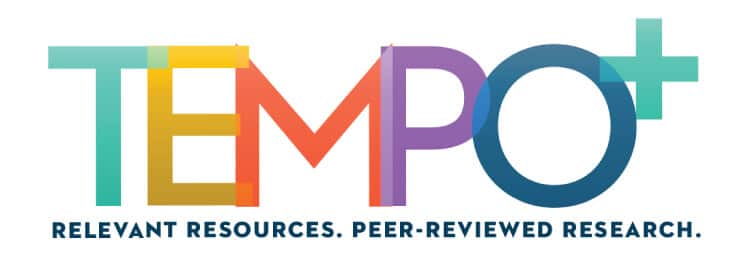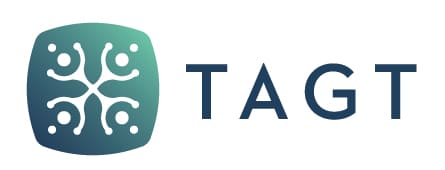This article was originally published in 1999 in Volume XIX, Issue 4 of TEMPO. For the 2018 anniversary issue, the article’s author, Dr. Susan Johnsen, a past-president of TAGT and notable scholar in the field of gifted education, took a look at the 1999 piece, published as part of the Millennial Issue of TEMPO, and included commentary on how the article’s points have changed—or remained the same—since its original publication. Click here to read her commentary.
During the past century, professionals have written about the issues that face the field of gifted education from identification to curriculum differentiation. These pioneers often challenged societal myths and persevered when funding was virtually nonexistent. As we approach the end of this millennium these past events may provide insight in identifying the important issues for the next millennium. For this review, articles published in Gifted Child Quarterly, Journal for the Education of the Gifted, and Roeper Review during the past 13 years were examined. To be included, the article had to focus on an historical examination of issues and events that influenced gifted education during the past century. I excluded articles that provided a historical overview of a single program, programs outside the United States, and longitudinal studies of gifted individuals. I did include articles about pioneers and scholars who made significant contributions to the field of gifted education. As Borland (1990) mentioned, I did not find a comprehensive history of the gifted child movement. I did find summaries of historical events, legislation and litigation, and curriculum.
Authors tended to disagree on the originator of gifted education. Goldberg (1986) cited Thomas Jefferson’s proposal for free public school, for “able boys;” Silverman (1989) cited Sir Francis Galton’s Hereditary Genius (1869), and Borland (1990) identified Yoder’s (1894) pioneering study. “The Story of the Boyhood of Great Men,” as the seminal work. While these differences were present, those who examined the history of gifted education frequently mentioned these pioneers—Galton, Goddard, Terman, and Hollingworth. Galton, Goddard, and Terman developed instruments for measuring intelligence. At Stanford Terman modified the Binet-Simon tests for use in the United States and initiated a longitudinal study of 1528 gifted children that was published in the Genetic Studies of Genius series beginning in 1925. While Galton, Goddard, and Terman assumed a strong hereditarian view of giftedness, Hollingworth challenged their assumptions about individual differences and the inferiority of women through her observational studies. She concluded that “eminence and superior mental ability are not identical” since “sociological factors might limit achievement” (cited in Silverman, 1989, p. 92). She focused her research on gifted children’s education, particularly those with intelligence quotients greater than 180, their vulnerabilities, and their need for nurturance. While cited by only one article, studies were also conducted with African-American children during the 20s and 30s (Kearney & LeBlanc, 1993). Excluded from the early literature, these researchers similar to Hollingworth also concluded that “where sufficient provision is made for optimum development of Negro children, the gifted Negro child will emerge” (p. 133).
It was not until the 50s, however, that more widespread research was published on gifted and talented education (Abraham, 1986). At Columbia, Passow initiated the Talented Youth Project in 1954 (Kirschenbaum, 1998; Passow, 1986). Guilford, using the relatively new statistical procedure of factor analysis, identified divergent production as a separate factor not measured by intelligence tests. At the national level, Rickover recommended a separate educational system for the gifted; but interest waned until the late 1950s with the advent of Sputnik (Abraham, 1986). Following Sputnik, more reports about the quality of American education were issued, the NEA initiated a talented youth project, and Governor’s Schools were created. Acceleration and ability grouping became an administrative arrangement in many public schools. However, within 5 years, funding was redirected. Legislation and litigation during the 60s and 70s tended to focus on equity issues—Head Start, Education for All Handicapped Children Act, Section 504, and PARC vs. Pennsylvania (Gallagher, 1986; Ford, Russo, & Harris, 1995). While interest in the general field of gifted education declined, conferences and publications on gifted handicapped increased (Johnsen & Corn, 1989). Interest was not renewed until federal legislation in 1969, the Gifted and Talented Children’s Education Assistance Act, the 1972 Marland Report, and the initiation of the Leadership Training Institute. While the Office of Gifted and Talented was opened in 1978, Reagan dismantled it with a consolidated categorical funding program. It was not until the Javits Act (1988) that federal money was specifically allocated to gifted and talented children. Under this legislation, the National Research Center for Gifted and Talented was established during the 1990s.
Goldberg (1986) explained these frustrating cycles of interest in gifted education in her article, Citing Tannenbaum, she noted that when the nation feels vulnerable from external forces, then gifted education flourishes; when the nation is concerned with social inequities, then money is diverted away from gifted education. Gallagher (1986) also reflected that the government tends to respond to crises rather than to the development of long-term goals. Other researchers concluded that until gifted education has a federal mandate, its support will fluctuate and the educational entitlement of gifted students will not advance (Ford, Russo, & Harris, 1995; Zirkel & Steven, 1987).
The concept of differentiated curriculum has been elaborated by researchers and challenged by others during this past century. Using the early work of Hollingworth and Goddard, curriculum adaptations during the 60s were divided primarily between the administrative arrangements of acceleration and enrichment. Only Ward (1961) related curricular adaptations to gifted student characteristics. This focus on individual differences was supported by the research about expert vs. novice performance that was also begun during the 1960s (Hong, 1999). The Marland Report (1972) identified characteristics for a differentiated curriculum that included both the administrative arrangements of special grouping and the focus on the development of higher cognitive processes. Most curriculum models that were popular in the 60s and 70s were mainly process-oriented (Passow, 1986). The only two content-specific models were Johns Hopkins SMPY and MEGSSS mathematics program. In 1981, the First National Curriculum Conference identified seven principles that addressed both content and process that are still referenced today. During the 90s, process-oriented models have been challenged because of limited research support. With national standards and achievement-oriented assessments, the differentiated curriculum pendulum is swinging away from the earlier eminent models toward more rigorous content models. This change is supported by some (Margolin, 1996) and decredited by others (Grant & Piechowski, 1999). Some fear that a common, rigorous curriculum for all might not result in an appropriate education for gifted and talented that would elicit a learner response ‘’commensurate with gifts or talents” (Passow et al., 1988, Herzog, 1998, p. 214).
In summarizing the current status of the field of gifted education, these researchers mention many of the same issues that are current today: grouping, gender differences, technology, early identification, standards for identification, fields of talent, parent education, preparation of regular classroom teachers, and funding (Abraham, 1986; Goldberg, 1986; Passow, 1986). This repetition led Passow to conclude that issues appear to be perennial—what was said in the past is still relevant today (Kirschenbaum, 1998; Passow, 1986).
Literature Review
Abraham, W. (1986). From Goddard to Gallagher and beyond. Roeper Review, 8, 218–222.
Abraham reviewed the early history of gifted education in this article, outlining leaders, trends, issues, and its future. The author reported that before the 1950s, little research was published on gifted and talented education. References related only to Terman’s Genetic Studies of Genius, Leta Hollingworth, and Goddard’s Major Work Classes in Cleveland. During the 1950s, Rickover recommended a separate educational system for the gifted and interest escalated after Sputnik. The author identified these issues that he believed should have been resolved earlier: flexible school entry, grouping, gender differences, technology, educational neglect, early identification, and funding. In the remaining part of the article, Abraham described seven essential components to the future of gifted education that included minority and handicapped children, parent education and involvement, child community awareness, preparation of regular classroom teachers, and a National “Think Tank” of Concerned Persons.
Borland, J. H. (1990). Leta Hollingworth’s contributions to the psychology and education of the gifted. Roeper Review, 12, 162–166.
Borland reviewed Hollingworth’s contributions to the field of gifted that included the first college course on the gifted (1918), the first comprehensive text (1926), the direct observation of gifted persons, the development of the Speyer School at Columbia (1922), the design of enrichment units, and her challenge to Terman’s stereotypes of gifted children as “happy, healthy, popular, and destined for greatness” with out appropriate nurturance. Borland concluded that the field of gifted education has been in place since Yoder’s (1894) pioneering study, “The Story of the Boyhood of Great Men,” but that a comprehensive history of the gifted child movement has not been conducted.
Ford, D. Y., Russo, C. J., & Harris lll, J. J. (1995). Meeting the educational needs of the gifted: A legal imperative. Roeper Review, 17, 224–228.
This article provided a summary of the law for exceptional students and offered recommendations to ensure appropriate services for gifted students. Beginning with PARC (1971, 1972) and the Mills case in the District of Columbia (1972), the authors identified two major principles: children with disabilities have the right to receive a free and appropriate education based on their individualized needs and are entitled to procedural safeguards. Section 504 (1973) then protected all individuals with disabilities. P.L. 94-142 and later IDEA provided comprehensive rights for students with disabilities.
Unfortunately in the Rowley case (1982), the Supreme Court established a floor of education that had the effect of “relegating the educational rights of gifted children to a low priority” (p. 226). In 1969, model programs for gifted and talented were funded under Titles III and IV of ESEA. After the Marland Report (1972), the first Office of Gifted and Talented was established and Title IV monies were made available for gifted education. While the Gifted and Talented Children Act of 1978 extended funding, all federal sources of funds for gifted education were placed in block funds under the Omnibus Budget Reconciliation Act of 1981. The Office of Gifted and Talented was closed as well. It was not until the Javits Act of 1988 that gifted education was again funded. The authors concluded that until gifted education has a federal man date, its support will fluctuate.
Gallagher, J. J. (1986). Equity vs. excellence: An educational drama. Roeper Review, 8, 233–234.
Gallagher described the conflict in education over equity vs. excellence. The emphasis on equity during the 1960s and 1970s were reflected in Head Start and P.L. 94-142, the Education for All Handicapped Children Act. While money at the U. S. Office of Education provided over a billion dollars for handicapped children, no money was allocated for gifted children during the 1970s and early 1980s. Gallagher reflected that the government tends to respond to crises rather than to the development of long-term goals. He concluded with strategies for policy support.
Goldberg, M. L. (1986). Issues in the education of gifted and talented children: Part 1. Roeper Review, 8, 226–233.
Goldberg examined historical and current issues in the field of gifted education. She traced the initiation of gifted education to Thomas Jefferson who proposed that free public schools be initiated for able boys who were too poor to pay for education. Goldberg believes that gifted education tends to be influenced by social and political forces. Citing Tannenbaum, she noted that when the nation feels vulnerable from external forces, then gifted education flourishes; when the nation is concerned with social inequities, then money is diverted away from gifted education. She reviewed three issues that relate to the determination of giftedness and talent: the identification of fields of talent; the standards for identification; and the criteria for the selection of assessment procedures. Historically, fields of talent are identified by national needs such as Sputnik. Standards are variable. For example, Conant proposed the top 5% identified as gifted and the top 20% as academically talented. While others define creatively gifted as those in the top 20% or the “number who can be accommodated by a particular school, class or program” (p. 229). Since performance varies for disadvantaged children, Goldberg suggested different criteria, situations, and/or areas of giftedness. The author also suggested different types of measures to assess aptitude in various fields. The author concluded by posing questions for research in the three issue areas.
Grant, B. A., & Piechowski, M. M. (1999). Theories and the good: Toward child-centered gifted education. Gifted Child Quarterly, 43, 4–12.
The authors summarized past theories and discussed their value in understanding gifted children. They included philosophers and educators in their list of people who described the purpose of education and the role of the teacher.
Hertzog, N. B. (1998). Open-ended activities: Differentiation through learner responses. Gifted Child Quarterly, 42, 212–227.
This article reviewed the meaning of differentiation over the past two decades. In 1961, Virgil Ward provided a theoretical framework that related curriculum propositions to the characteristics of gifted children. These included the emphasis on “enduring methods and sources of learning’’ and “continuous, ongoing acquisition of data pertinent to problem situations” (p. 214). The Marland Report (1972) identified three characteristics for a differentiated curriculum—higher cognitive processes; instructional strategies that accommodate content and learning styles, and special grouping arrangements. In 1976, the Office of Gifted Education defined differentiated education as a process of instruction that is “integrated into the school program and is adaptable to varying levels of individual learning response” (p. 214). Renzulli (1977) emphasized modifications that are beyond the regular curriculum, that address student interests and styles, and that allow students to pursue topics. In 1981, the First National Curriculum Conference identified seven principles that focused on curriculum for gifted/talented that are still frequently cited today. Maker (1982) suggested that the curriculum be accelerated, complex beyond the regular curriculum, match student interests, and address abstract concepts. Little research, however, has been conducted that addresses the principles of curriculum differentiation. Therefore the remainder of the article reported a study regarding the nature of open-ended activities that is related to Passow’s definition of differentiated curriculum—the curriculum should elicit a learner response that is “commensurate with gifts or talents.”
Hong, E. (1999). Studying the mind of the gifted. Roeper Review, 21, 244–252.
Research regarding expert performance began during the 1960s. Differences between experts and novices noted in research are “amount, accessibility, and organization of knowledge, mental representations, accuracy and speed of information processing, and efficiency of cognitive strategies and metacognitive skills” (p. 245). The article then summarized approaches to studying the mind and encouraged more research in the area.
Johnsen, S. K., & Corn, A. L. (1989). The past, present, and future of education for gifted children with sensory and/or physical disabilities. Roeper Review, 12, 13–23.
This article described the history of the gifted handicapped field. While Leta Hollingworth described disabled individuals in her book Special Talents and Defects, it was not until the 1970s that this population began to be recognized. In 1976, the first National Topical Conference on Handicapped Gifted and Talented Students was held. By 1977, the CEC distributed a Fact Sheet on Gifted Handicapped and TAG established a special committee on the Gifted Handicapped. Maker (1977) wrote the first book, Providing Programs for the Gifted Handicapped. With IEP’s and Public Law 94-142, more attention was paid to disabled students with strengths or gifts. During the 1970s, more research was conducted with special populations but interest waned during the 1980s as funding dissipated. The reminder of the article discussed characteristics of programs for the gifted disabled.
Kearney, K., & LeBlanc, J. (1993). Forgotten pioneers in the study of gifted African-Americans. Roeper Review, 15, 192–199.
These authors reviewed the work of five scholars who studied gifted African-American children. At the University of Chicago, Bond (1927) found evidence to suggest that exceptional Black children, those scoring 130 IQ on the Binet-Simon Scales, had been encouraged by their parents to read. He believed that early enrichment might compensate for poor schooling. Proctor (1929), a social worker, identified 30 exceptional children in the Washington, D.C., schools and described the poor quality of their education and limited access to enrichment. Terwilliger (1934), one of Hollingworth’s students, studied 10 gifted children from Harlem and concluded that 90% of the group selected professional occupations. Jenkins (1935) a student of Paul Witty, studied seven racially segregated elementary schools on the south side of Chicago. Through a multi-level screening process, 103 gifted children were located. He concluded that “where sufficient provision is made for optimum development of Negro children, the gifted Negro child will emerge” (p. 1993). Finally, Terman (1942), another student of Paul Witty, conducted a follow-up study of Jenkins’ children. She found that the students were highly interested in school but had a much lower achievement test rating than the gifted white boys and girls in Terman’s study. The authors concluded these studies were not integrated into the field because of the established social, political, and academic paradigms of the 1930s.
Kirschenbaum, R. J. (1998). Interview with Dr. A. Harry Passow. Gifted Child Quarterly, 42, 194–199.
Through his involvement in the field of gifted education since the 1950s, Dr. Passow provided a valuable perspective of the field of gifted education. Passow discussed his research at Talented Youth Project begun at Teacher’s College in the 50s, Columbia University; the National Educational Association’s Conference on the academically talented following the launch of Sputnik; the National Defense Education Act of 1958 that stimulated curriculum reform; the UNESCO Institute that focused on measuring international levels of achievement; and national reports such as A Nation at Risk. In his discussion, he addressed such issues as equity vs. excellence; teacher training; various conceptions of giftedness; administrative arrangements vs. curriculum differentiation; assessment; national curriculums; and his definition for a gifted person: “an individual with potential for outstanding achievement in a socially valuable area” (p. 198). He concluded the interview by stating that what was said in the past is still relevant today.
Margolin, L. (1996). A pedagogy of privilege. Journal for the Education of the Gifted, 19, 164–180.
Margolin reviewed the early giftedchild curriculum in this article. This curriculum primarily focused on promoting students ahead of their peer, or placing them in separate rapid-advancement classes. Goddard and later researchers, however, found that this rapid advancement was not based on the “character and needs of gifted children” (p, 166). The focus of gifted education changed to creating a curriculum that nurtured the characteristics of the gifted learner. From a survey of introductory texts in gifted education, the author found that only 11% of the pages dealt with teaching basic academic subject matter. The author concluded that it is not what is taught but “from where it is taught and who is taught” (p. 177).
Morelock, M. J. (1996). On the nature of giftedness and talent: Imposing order on chaos. Roeper Review, 19, 4–12.
This article traced the history of theoretical concepts, identified significant empirical studies, and proposed a theoretical framework for the field of gifted education. Morelock reviewed Galton, Binet and Terman, and Hollingworth’s conceptions of giftedness. While Galton and Binet and Terman all took a genetic view of intelligence, they all understood that environment assumed an important role. Hollingworth examined the social-emotional difficulties of gifted children and also emphasized the importance of those who nurtured their development. All viewed gifted students as having a “generalized capacity’’ that surpassed peers of similar chronological age and as needing support. The field was influenced by the research of Terman (the IQ test), Guilford (divergent thinking or creativity), the Marland report (federal definition), Feldman (child prodigies), Gardner and Sternberg (broader conceptions of intelligence), Vygotsky (social construction), and those who have studied IQ, independent and dependent abilities. The author concluded her article by comparing and contrasting the Talent Development Movement with the Columbus Group Movement. She concluded that both the concepts of giftedness and talent are social constructs, refer to different phenomena, and are educationally relevant.
Passow, A, H. (1986). Reflections on three decades of education of the gifted. Roeper Review, 8, 223–226.
Passow reviewed the past history of education beginning with his 1954 Talented Youth Project at Teachers College. He suggested that the 1955 publication Planning for Talented Youth: Considerations for Public School might still be timely since the issues remain unchanged. While the launching of Sputnik produced interest, the Marland Report of 1972 could still describe the inadequacy of services to gifted students. It described the need for a “differentiated curriculum.’’ Passow then reviewed the history of “differentiated curriculum.” He first described four types of curriculum: general education, specialized, subliminal, and non-school. During the 1960s, curriculum adaptations were divided between acceleration and enrichment. Only Ward (1961) related curricular adaptations to gifted student characteristics. Curriculum models that were popular during the 1960s and 1970s were mainly process-oriented and included Bloom’s Taxonomy, the Structure of the Intellect, Synectics, Phenix’s realms of meaning, creative problem solving, multiple talents, Taba’s cognitive function, Kohlberg’s moral development, Renzulli’s enrichment triad, and Williams’ total creativity program. The only two content-specific models were Johns Hopkins SMPY and MEGSSS mathematics program. He concluded by saying that issues appeared to be perennial and that gifted educators will always need to concern themselves with “legislation, funding, mandates, etc. but then [without them] there would be no challenge and no excitement!” (p. 226).
Passow, A. H., Richert, E. S., Roedell, W. C., Roeper, A., Barrons, G., Braunstein, D., Doyle, P., & Lawson, S. (1988). Open forum. Roeper Review, 10, 212–218.
This article summarized the opening session of the Annual Meeting of the Roeper Review Editorial Advisory Board. Passow indicated that educational reform has been encouraged since the early 1970s. By the 1980s, 13 reports had been published. Many of the reports address “excellence.” Excellence meant for individuals to perform on the “boundary of individual ability;” for colleges to set high expectations; and for society to be prepared “to respond to the challenges of a rapidly changing world” (A Nation at Risk, 1983; cited on pp. 212–213). John Gardner indicated that excellence related to actual achievement, the value of the field, and its encouragement. These reports did not address the education of gifted and talented directly but did stimulate a large number of state and local task force initiatives. The focus was on the establishment of more rigorous academic requirements. The participants believed that such focus on a common, rigorous curriculum might not result in an appropriate education for gifted and talented children.
Silverman, L. K. (1989). It all began with Leta Hollingworth: The story of giftedness in women. Journal for the Education of the Gifted, 12, 86–98.
Silverman reported that the study of giftedness began with Sir Francis Galton’s Hereditary Genius (1869). Galton reported that males outperformed women on all dimensions. Hollingworth challenged Gatton and many of the conclusions of earlier researchers. She concluded that “eminence and superior mental ability are not identical” since “sociological factors might limit achievement” (p. 92). While Terman was interested in the description of giftedness, Hollingworth was more concerned with their education. Hollingworth advocated special classes for gifted because she believed that enrichment in the regular classroom was mostly busy work. Silverman concluded that Hollingworth’s work is still a helpful guide for educators of gifted students today.
Tannenbaum, A. J. (1986). Reflection and refraction of light on the gifted. Roeper Review, 8, 212–218.
This was the introductory article to a special issue that reviewed the field of gifted education for the past 25 years. Tannenbaum discussed four issues that continue to confront gifted education: IQ, provisions for gifted education, the nurturance of talent, and anti-intellectualism. He then described positive influences on the field such as increase in funding, leadership through the Leadership Training Institute (initiated during the 1970s), the development of graduate programs (Graduate Leadership Education Project), advocacy groups, instructional models, acceleration, and enrichment.
Torrance, E. P. (1986). Glimpses of the “promised Iand.” Roeper Review, 8, 246–251.
In this article Torrance reflected on his career and ideas that he believed would continue without his presence. These ideas included future problem solving (initiated in 1974), the Torrance Tests of Creative Thinking (1966), international networks, the Torrance Center for Gifted, and his instructional model. He believed that other ideas that might still have an opportunity to be pursued included a broader concept of intelligence, creative reading, the teaching of research and inventive skills, sociodrama, the inclusion of the intuitive domain, intergenerational learning, the Sounds and Images tests, inclusion of creative instructional materials, and identifying areas that relate to gifted children’s interests. He concluded with ideas that have been rejected, ignored, or forgotten such as levels of consciousness, gifted disadvantaged, career-future awareness models, creative activities for the elderly, and the healing qualities of creativity.
Vialle, W. (1994). “Termanal” science? The work of Lewis Terman revisited. Roeper Review, 17, 32–38.
Vialle reviewed Terman’s work within the framework of his time and space. She reviewed his positions on gender, race, social class, and intelligence testing. Given the hereditarian views of his time, Terman was interested in human differences and believed in special classes, special curricula, and special classroom procedures for “every form of exceptional talent” (p. 37).
Ward, V. S. (1986). Theory in the practice of differential education for the gifted. Roeper Review, 8, 263–271.
At the beginning of this article, Ward presented five propositions on the field of Differential Education for the Gifted. He then reviewed the background history for these propositions. Beginning with his own dissertation research in the early 1950s, he reviewed theory in actual form within these historical events: professional training in differential education at the University of Virginia, the Academically Talented Student Project of the National Education Association in 1958, the Southern Regional Project for Education of the Gifted, and the Governor’s School of North Carolina. He concluded that the field had become politicized and needed to nurture new leadership and incorporate advances in the arts, sciences, and new technologies.
Zirkel, P. A., & Steven, P. L. (1987). The law concerning public education of gifted students. Journal for the Education of the Gifted, 10, 305–322.
This article provided a comprehensive overview of law concerning the education of gifted students on the federal and state levels. The U. S. Office of Education established a section on Exceptional Children and Youth in 1931, yet interest waned until the late 1950s with the advent of Sputnik. Federal funding was redirected in the 1960s until the first federal legislation in 1969, the Gifted and Talented Children’s Education Assistance Act. Congress passed similar acts in 1974 and 1978. The 1974 Act established an Office of Gifted and Talented and the 1978 Act defined “gifted and talented.” The Office was dismantled when Reagan consolidated categorical funding into the Chapter II block grant program. Approximately 44 states had legislation or regulations regarding gifted students in 1980; 17 required IEPs and/or due process. The largest number of due process cases have been reported in Pennsylvania since it included “gifted and talented school-aged persons” under its 1975 regulations that defined “exceptional persons.” The authors reported that most of these decisions have not enlarged the educational entitlement of gifted students. The difference between the advancement of handicapped students vs. gifted students can be attributed to the absence of a federal mandate.
Susan K. Johnsen, Ph.D., is a professor emerita of the Department of Educational Psychology at Baylor University. She is editor-in-chief of Gifted Child Today and coauthor of Identifying Gifted Students: A Practical Guide, Using the NAGC Pre-K-Grade 12 Gifted Programming Standards, Independent Study Program, and more than 300 articles, monographs, technical reports, chapters, and other books related to gifted education. She has written three tests used in identifying gifted students: Test of Mathematical Abilities for Gifted Students (TOMAGS-2), Test of Nonverbal Intelligence (TONI-4), and Screening Assessment Gifted Students (SAGES-3). She is past president of The Association for the Gifted (TAG), Council for Exceptional Children, and past president of the Texas Association for Gifted and Talented (TAGT). She has received awards for her work in the field of education, including NAGC’s Ann Isaac’s Award, NAGC’s President’s Award, CEC’s Leadership Award, TAG’s Leadership Award, TAGT’s President’s Award, TAGT’s Advocacy Award, and Baylor University’s Investigator Award, Teaching Award, and Contributions to the Academic Community Award. She may be reached at Susan_Johnsen@baylor.edu.






